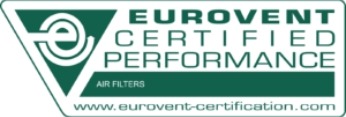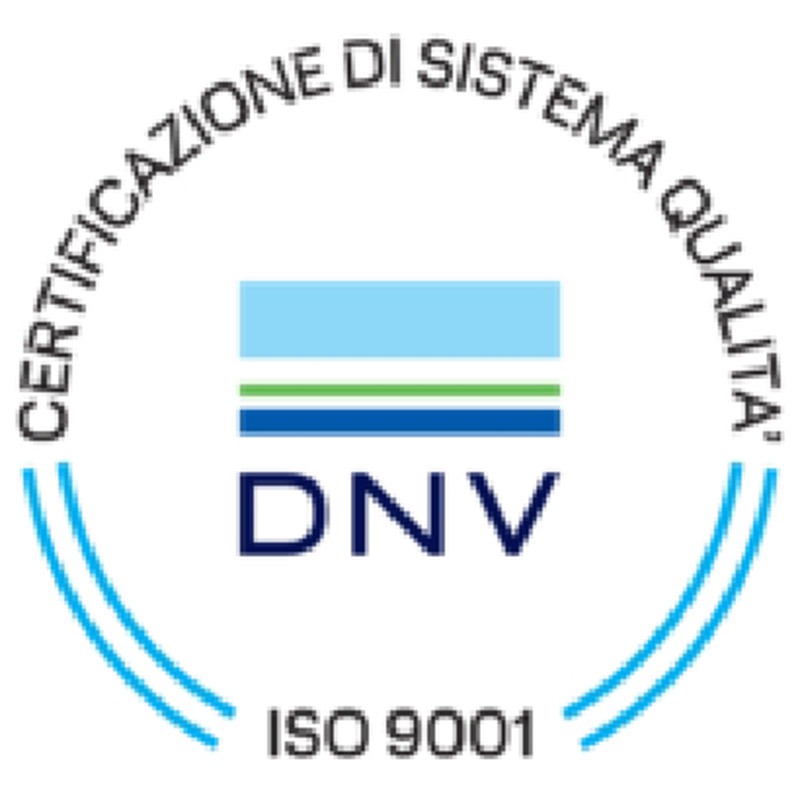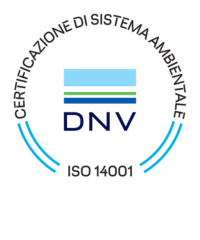Standards and Certifications
The perfect filter does not exist; however, certain filters surpass others in performance, gauged by metrics such as dust-holding capacity, filter efficiency, and pressure drop. These quantities, acknowledged by prominent standards, serve as crucial parameters to predict the actual performance of filters and facilitate meaningful comparisons. In practice, a comprehensive comparative study involves the consideration of numerous variables. It’s noteworthy that filters typically reside within an aeration system for months or even years, while the evaluation tests for a filter are conducted within a relatively brief time-frame, often spanning minutes or a few hours at most.
The perfect filter does not exist; however, certain filters surpass others in performance, gauged by metrics such as dust-holding capacity, filter efficiency, and pressure drop. These quantities, acknowledged by prominent standards, serve as crucial parameters to predict the actual performance of filters and facilitate meaningful comparisons. In practice, a comprehensive comparative study involves the consideration of numerous variables. It’s noteworthy that filters typically reside within an aeration system for months or even years, while the evaluation tests for a filter are conducted within a relatively brief time-frame, often spanning minutes or a few hours at most.
Standards
EN ISO 16890
Dust Air Filters for General Ventilation. The standard outlines the prerequisites for dust filters, detailing both the methodologies and the test apparatus for quantifying the performance of a filter. This European standard applies to air filters with an initial efficiency of less than 98% with respect to 0.4 micron particles. Filters must be tested at air flow rates between 0.24 m³/s (850 m³/h) and 1.5 m³/s (5400m³/h). This legislation, approved in March 2012 and implemented in Italy by June 2012, heralds a significant advancement for fine filters (F7, F8, and F9). These filters are now required to adhere to a new parameter known as minimum efficiency (ME).
As a consequence of this new regulation, a noteworthy impact will be the reclassification of nearly all existing synthetic fibre filters. Synthetic fibres undergo an electrostatic charge during processing, enhancing initial efficiency. However, over time, this electrostatic charge diminishes, leading to a subsequent decrease in efficiency.
To address this challenge, manufacturers of synthetic fibres are innovating with advanced septa designs that conform to the new efficiency regulations.
In contrast to synthetic fibres, fibreglass exhibits resilience to the loss of electrostatic charge. It maintains consistent efficiency throughout its life cycle, ensuring performance that aligns with regulatory limits throughout the entire operational lifespan of the filter. Subsequent to the implementation of this standard, the previous ‘Fini’ filters F5 and F6 have been reclassified as ‘Medium,’ denoted by M5 and M6.
| Group | Class | Reference value | Final ΔP (Pa) | ||
|---|---|---|---|---|---|
| ePM1 min | ePM2,5 min | ePM10 | |||
| 0,3 ≤ x ≤ 1 | 0,3 ≤ x ≤ 2,5 | 0,3 ≤ x ≤ 10 | |||
| ISO Coarse | – | – | < 50% | Initial gravimetric arrestance | 200 |
| ISO ePM10 | – | – | ≥ 50% | ePM10 | 300 |
| ISO ePM2,5 | – | ≥ 50% | – | ePM2,5 | 300 |
| ISO ePM1 | ≥ 50% | – | – | ePM1 | 300 |
| EN779:2012 | EN ISO16890 |
|---|---|
| Air flow rate between 0,24 m3/s (850 m3/h) e 1,5 m3/s (5400 m3/h) | Air flow rate between 0,25 m3/s (900 m3/h) e 1,5 m3/s (5400 m3/h) |
| F9, F8, F7, M6, M5, G4, G3, G2, G1 | ePM1, ePM2,5, ePM10, ISO Coarse are massive concentrations of particles |
| Dp = 0,4 μm | 0,3 μm ≤ Dp ≤ 10 μm |
| Minimum efficiency (ME) defines the filtration class between F7-F9 | Average efficiency (EA) is the average of the initial (Ei) and discharged (Ed) efficiencies |
| Ed from media samples (F7-F9) on liquid isopropanol | Ed from complete filter with isopropanol vapours |
| Dust accumulation is calculated up to the final pressure of 450 Pa | PM10 < 50% – final Δp = 200 Pa PM10 ≥ 50% – final Δp = 300 Pa |
| Powder: ASHRAE | Powder: ISO A2/AC Finev |
UNI EN 1822-1:2019 & EN ISO 29463
The standard applies to high and ultra-high efficiency and ultra-low penetration air filters (EPA, HEPA and ULPA) used in ventilation and air conditioning, as well as in technological processes such as clean room technology or the pharmaceutical industry. The above sets forth a method for determining efficiency using a particle counting technique with a liquid (or alternatively solid) test aerosol. It enables the standardised classification of these filters based on their efficiency.
The table shows the various classifications of high-efficiency filters in accordance with EN 1822-1:2019 & EN ISO 29463 standards.
EN 1822-1:2019 & EN ISO 29463 standards provide methodologies for:
A) evaluate the efficiency of the filter medium. Employing advanced particle counting technology, we ascertain both the quantity and size of particles retained by the filter. Subsequently, through rigorous data processing, we identify the particle size at which the medium exhibits minimal efficiency. The above mentioned size is known as MPPS, an acronym for ‘most penetrating particle size’.
B) Check the filter element for leaks. This test is performed with an aerosol-producing probe that can be moved across the entire surface of the filter to collect a range of local efficiency data that will then be used to determine the overall efficiency. This approach also enables the determination of the leakage rate within a specific area of the filter. The calculation of overall efficiency is often defined as an integral value, while the loss rate is defined as a local value.
C) establishing the integral efficiency of the filter element. nitially, the filter’s pressure drop is gauged at a volumetric air flow rate matching the nominal air flow rate. Subsequently, an aerosol generator is employed to ascertain the filter efficiency concerning particles at the Most Penetrating Particle Size (MPPS). Based on the value of this efficiency, a classification is made according to the table above.
| Filter class | Integral value | Local value | ||
|---|---|---|---|---|
| Efficiency % | Penetration % | Efficiency % | Penetration % | |
| E10 | ≥ 85 | ≤ 15 | – | – |
| E11 | ≥ 95 | ≤ 5 | – | – |
| E12 | ≥ 99,5 | ≤ 0,5 | – | – |
| H13 | ≥ 99,95 | ≤ 0,05 | ≥ 99,75 | ≤ 0,25 |
| H14 | ≥ 99,995 | ≤ 0,005 | ≥ 99,975 | ≤ 0,025 |
| U15 | ≥ 99,9995 | ≤ 0,0005 | ≥ 99,9975 | ≤ 0,0025 |
| U16 | ≥ 99,99995 | ≤ 0,00005 | ≥ 99,99975 | ≤ 0,00025 |
| U17 | ≥ 99,999995 | ≤ 0,000005 | ≥ 99,9999 | ≤ 0,0001 |
ISO 14644-1
Part 1: Classification of air cleanliness
ISO 14644-1, defines standards for clean rooms and controlled environments. This standard classifies air exclusively based on the concentration of suspended particles. Moreover, when classifying according to this standard, particle sizes ranging from 0.1 microns up to 5 microns are considered.
| Number of air purity class | MAXIMUM CONCENTRATION OF PARTICLES PER M³ OF AIR WITH A SIZE EQUAL TO OR GREATER THAN THOSE SHOWN IN THE TABLE | |||||
|---|---|---|---|---|---|---|
| 0.1 um | 0.2 um | 0.3 um | 0.5 um | 1 um | 5 um | |
| ISO 1 | 10 | 2 | ||||
| ISO 2 | 100 | 24 | 10 | 4 | ||
| ISO 3 | 1000 | 237 | 102 | 35 | 8 | |
| ISO 4 | 10000 | 2370 | 1020 | 352 | 83 | |
| ISO 5 | 100000 | 23700 | 10200 | 3520 | 832 | 29 |
| ISO 6 | 1000000 | 237000 | 102000 | 35200 | 8320 | 293 |
| ISO 7 | 352000 | 83200 | 2930 | |||
| ISO 8 | 3520000 | 832000 | 29300 | |||
| ISO 9 | 35200000 | 8320000 | 293000 | |||
EN 16798-3:2018
UNI 10339
The standard sets out a categorisation of installations, outlines the definition of minimum requirements, and specifies the reference values for key quantities during operation.
It is applicable to aeraulic systems designed for human comfort within enclosed structures. However, it excludes systems for winter air-conditioning in buildings utilized for industrial or artisan activities (subject to UNI 8852), systems serving diverse purposes such as the preservation of perishable products or the facilitation of specific industrial processes (process systems), and systems focused solely on winter heating or summer cooling without the incorporation of external air mechanics.
The standard is presently undergoing revision, and in terms of classifying indoor and outdoor air quality, it integrates the principles of EN 13779. Essentially, the classification aligns with the details outlined in table 1.
| Category | Description |
|---|---|
| ODA1 | Pure outside air that may contain occasional dust (e.g. pollen) |
| ODA2 | Outside air with a high concentration of particulate matter |
| ODA3 | Outside air with a high concentration of gaseous pollutants |
| ODA4 | Outside air with high concentrations of solid particles and gaseous pollutants |
| ODA5 | Outside air with very high concentrations of solid particles and gaseous pollutants |
| Category | Description |
|---|---|
| IDA 1 | high |
| IDA 2 | Average |
| IDA 3 | Modest |
| IDA 4 | Low |
Recommended filters in accordance with UNI 10339
In contrast to the existing UNI 10339 standard, its revised version not only defines the minimum filtration class based on the building’s intended purpose but also takes into account the desired indoor air quality level and the prevailing outdoor air quality level. Furthermore, in the presence of known specific pollutants, at least one filter with certified effectiveness on these pollutants must be included in the abatement system related to the supplementary ventilation circuit.
The UNI 10339 standard additionally provides directives regarding the optimal timing for filter replacement:
“the replacement of mechanical particulate filters is generally based on their clogging indicated by the final pressure drop. However, for hygienic reasons, pre-filters and filters must be periodically inspected in accordance with current legislation and the manufacturer’s instructions and replaced, even if the pressure drops are still deemed acceptable, when phenomena of biological contamination appear’.
| Building category | ODA level | Internal quality level | Minimum number of filtration stages | ||
|---|---|---|---|---|---|
| IDA1 | IDA2 | IDA3 | |||
| Residential and similar buildings | 1 2 3 |
F6 F7 F8* |
F5 F6 F6* |
G4 F5 F5* |
2-1 2 2* |
| Hotel facilities | 1 2 3 |
F7 F8 F8* |
F6 F7 F7* |
F5 F6 F6* |
2 2 2* |
| Office and similar buildings | 1 2 3 |
F7 F8 F8* |
F6 F7 F7* |
F5 F6 F6* |
2 2 2* |
| Clinics and similar hospitals | 1 2 3 |
F7 F8 F8* |
F6 F7 F7* |
F5 F6 F6* |
2 2 2* |
| STERILE AND INFECTIOUS ROOMS, MATERNITY, ANAESTHESIA, RADIATION, PRE-SURGERY, OPERATING THEATRES AND THE LIKE | 1 2 3 |
H14 H14 H14* |
H13 H13 H13* |
H12 H12 H12* |
3 3 3* |
| Association and worship buildings | 1 2 3 |
F7 F8 F8* |
F6 F7 F7* |
F5 F6 F6* |
2 2 2* |
| Environments for recreational activities | 1 2 3 |
F7 F8 F8* |
F6 F7 F7* |
F5 F6 F6* |
2 2 2* |
| Commercial and similar buildings | 1 2 3 |
F7 F8 F8* |
F6 F7 F7* |
F5 F6 F6* |
2 2 2* |
| Sports and similar buildings | 1 2 3 |
F7 F8 F8* |
F6 F7 F7* |
F5 F6 F6* |
2 2 2* |
| Buildings for school activities | 1 2 3 |
F7 F8 F8* |
F6 F7 F7* |
F5 F6 F6* |
2 2 2* |
| *Add filter for gaseous contaminants | |||||
UNI 11425
Design, installation, commissioning, qualification, operation and maintenance
Design, installation, commissioning, qualification, operation and maintenance This standard offers guidelines for designing, installing, commissioning, performance monitoring, acceptance, and management of systems and components dedicated to controlling environmental contamination and maintaining predetermined thermo-hygrometric conditions in wards designed for surgical activities, commonly referred to as operating blocks. This standard is applicable to both new constructions and the renovation of buildings and/or plants, specifically focusing on operating blocks.
It outlines the essential prerequisites for validating the usage conditions of existing structures. Below are the recommended values for environmental parameters and associated quantities as outlined by UNI 11425: To attain the prescribed air purity class across diverse environments, the standard delineates the minimal efficiency level required for air filters:
| Environments | Temperature [°C] | U.R. [%] | Overlapping with respect to the outside [Pa] | Outside air [vol/h] | Recirculating air [-] | Cleanliness classes in accordance with EN ISO 14644-1 | Final filtration level | Sound pressure level [dBA] | ||
|---|---|---|---|---|---|---|---|---|---|---|
| Winter | Summer | Winter | Summer | |||||||
| Operating theatres with very high air quality | ≥22 | ≤24 | ≥40 | ≤60 | 15 (1) | 15 | SI (2) | ISO5 | H14 | 45 (3) |
| HIGH AIR QUALITY OPERATING THEATRES | 15 (1) | 15 | SI (2) | ISO7 | H14 | 45 (3) | ||||
| STANDARD AIR QUALITY OPERATING THEATRES | 15 (1) | 15 | – (4) | ISO8 | H14 | 45 (3) | ||||
| Sterile deposits | ≥22 | ≤26 | ≥40 | ≤60 | 15 | ≥2 (5) | – (4) | – | H14 | 45 |
| Operandi preparations | 10 | ≥2 (5) | – (4) | – | ≥H12 | – | ||||
| Personal preparation | 10 | ≥2 (5) | – (4) | – | ≥H12 | – | ||||
| Awakening operandi | 10 | ≥2 (5) | – (4) | – | ≥H12 | – | ||||
| Clean/ sterile corridor | 10 | ≥2 (5) | – (4) | – | ≥H12 | – | ||||
| Filter operandi spaces | 5 | ≥2 (5) | – (4) | – | ≥F9 | – | ||||
| Personal filter space | 5 | ≥2 (5) | – (4) | – | ≥F9 | – | ||||
| Substerilisation | 10 | ≥2 (5) | – (4) | – | ≥H12 | – | ||||
| Clean deposits | ≥18 | ≤26 | ≥40 | ≤60 | 10 | ≥2 (5) | – (4) | – | ≥H12 | – |
| Dirty deposits | 5 | ≥2 (5) | NO | – | ≥HF9 | – | ||||
| (1) Operating theatres for use by infected patients are depressed in relation to neighbouring rooms (2) Please refer to the examples in Annex D (3) In the event of renovations where it is necessary to construct class IOS5 operating theatres using room recirculation systems, a maximum of 48 dB (A9 may be achieved; this choice must be justified in the project documents (4) In accordance with the requirements for air cleanliness and control: (5) The minimum value to be considered in the absence of alternative established values, adheres to specific crowding requirements, sources of contaminants, and is determined through risk analysis. Values imposed by current legislation (Decree of the President of the Republic of 14/1/1997) |
||||||||||
Certifications
EUROVENT CERTIFIED PERFORMANCE
The certifying body
‘Eurovent Certified Performance’ is issued by ‘Eurovent Certita Certification’ (ECC), an independent body that meets the highest standards of independence, reliability, integrity and is EN ISO/IEC 17065:2012 accredited. In addition to air filtration, it offers many other programmes. Established in 2013 through the merger of Eurovent Certification Company and Certita, our origins trace back to Eurovent, the prominent European industry association for indoor climate (HVAC), process cooling, and food cold chain technologies. Eurovent commenced its operations in the 1950s, coinciding with the burgeoning market for heating and refrigeration systems. Presently, its certification mark enjoys global recognition.
The certifying body
It performs tests in accordance with globally recognised regulations and standards.
For the analysis of filter devices, ECC relies on ‘ISO 16890:2016 and EN 15805:2010, two benchmark standards within the HVAC sector. The former establishes the frame size, while the latter dictates the classification, measurement equipment (RIG test), gravimetric arrestance, and its quantification. In the last part, it shows the procedure and instrumentation to determine discharged efficiency.
Verification of declared information
Upon confirmation of suitability, the model and performance details are officially verified and subsequently published on eurovent-certification.com, available for reference by all stakeholders. Information is readily available. For example, to access the list of approved GeneralFilter filters, navigate to the “Certified Products” menu, choose “Access by Participant,” scroll through the list, select General Filter, and then click on FIL/AIR FILTER under the Air Filters category (Class M5-F9).
Once the data is disclosed on the website, it is imperative for the manufacturer to uphold the stated information. Eurovent Certita Certification has the authority to conduct random checks to ensure compliance with the declared specifications.
Ensuring compliance with published data
An anonymous reporting system is in place to identify filter devices that fail to meet the established standards. Once the notice is received, ECC takes samples from the market and retests them to verify that the performance still matches the guaranteed performance. If any anomalies are found, the manufacturer is issued a penalty.
What parameters does it refer to?
In the certification process, a comprehensive evaluation is conducted, taking into account various technical aspects including the nominal flow rate, configuration, depth, filter media type, and the count of pockets or ‘V’ formations.
The assessment focuses on key performance indicators such as the filtration class, initial pressure drop, and average efficiency. If the element is to be energy certified, the consumption and energy class will also be tested.
The results achieved are published on the website, and these are the figures for which ECC provides a guarantee.
How can you recognise a certified product?
A filter’s approval by Eurovent Certita Certification is definitively confirmed by the presence of the ‘Eurovent Certified Performance’ logo.

Occasionally, you may also encounter the version displayed below, which shows that the energy class has undergone thorough testing.

A logo that stands for trust
Through the rigorous testing of filters in accordance with international standards, ensuring certified performance, and vigilantly monitoring manufacturers’ compliance, ECC provides a robust guarantee for your peace of mind. Hence, many industry-leading companies, including General Filter, choose to certify their filter devices with Eurovent Certified Performance.
UNI EN ISO 9001:2015 CERTIFICATE N°: CERT-05145-99-AQ-VEN-SINCERT
In response to the need of providing an enhanced assurance of quality to our clientèle, General Filter Italia has undertaken the expansion of its product range. This expansion is accompanied by stringent oversight of the manufacturing process, emphasizing quality control measures. Additionally, meticulous scrutiny is applied to supplier selection, with a focus on partnering exclusively with companies demonstrating unparalleled expertise in their respective fields. With this in mind, the company has been ISO 9001 certified since 1999.

ISO 14001:2015 Certificate N°: CERT-05145-99-AQ-VEN-SINCERT
The incorporation of the environmental management system represents the seamless extension of General Filter Italia’s enduring dedication to environmental stewardship, firmly embedding it within the core mission of the company.
In our pursuit of excellence, we actively seek raw materials with minimal environmental impact, prioritizing high performance to effectively decrease the Life Cycle Cost of the end product.
We streamline our production operations through scheduled maintenance work to enhance efficiency, minimizing raw material waste and, consequently, overall waste output.
Each incremental effort in favour of the environment constitutes a significant stride toward a brighter future.
This is General Filter’s first step.

Contact us
right away
We read every message carefully.
In case of emergencies or to request written technical advice, we are at your complete disposal: just fill out the form alongside.
Contact us
right away
We read every message carefully.
In case of emergencies or to request written technical advice, we are at your complete disposal: just fill out the form alongside.


